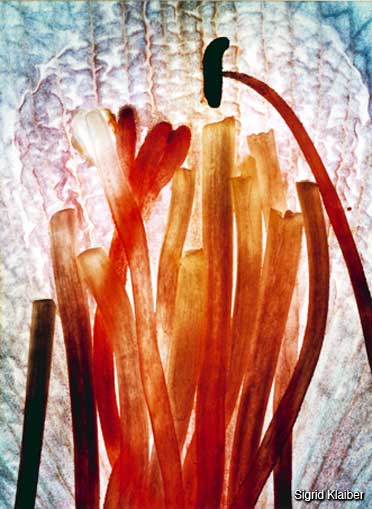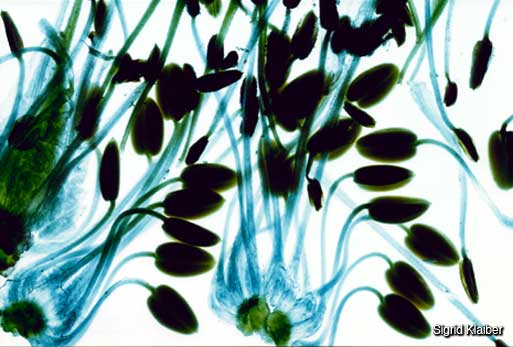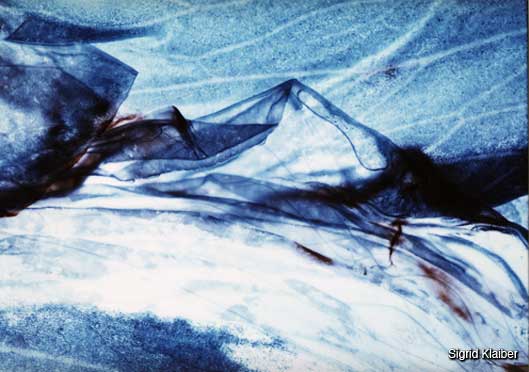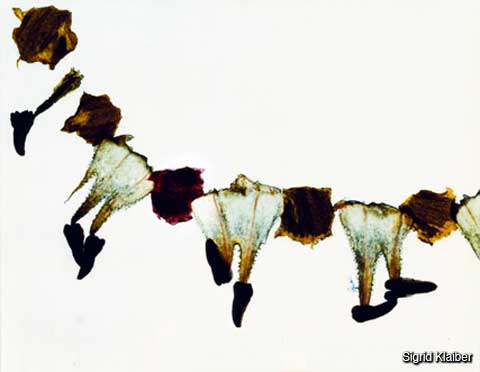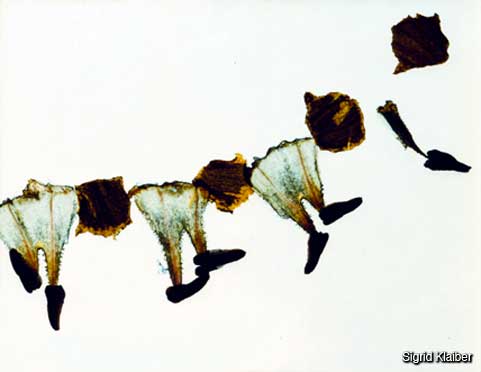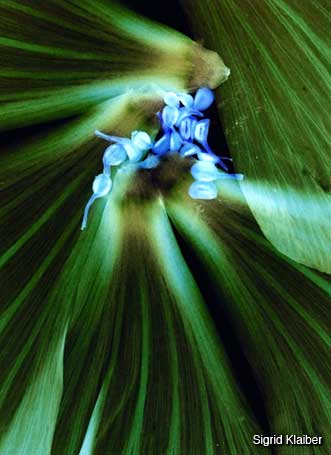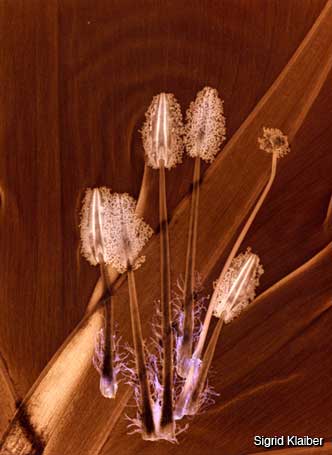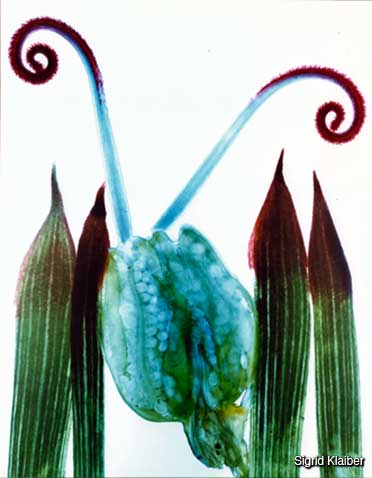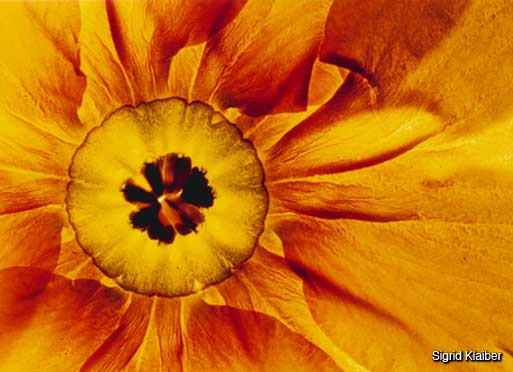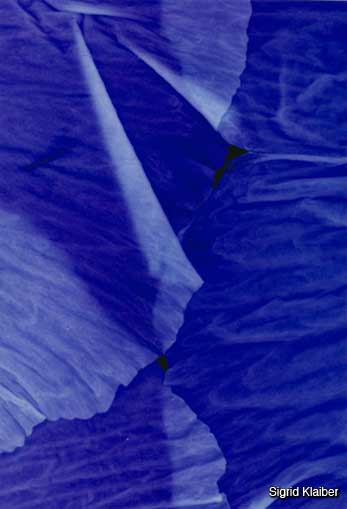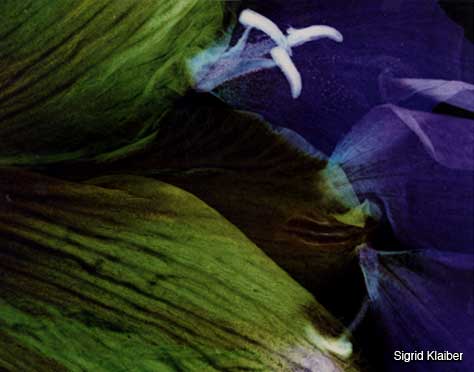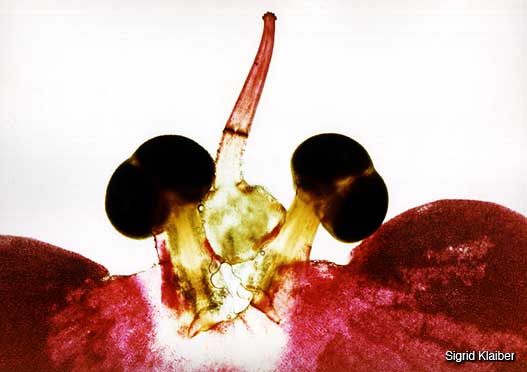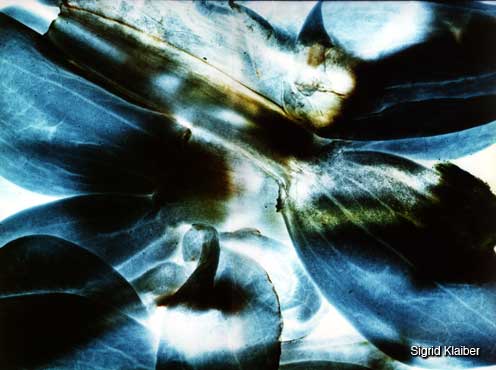Home
The Artist
Exhibitions
Gallery
Contact
|
Welcome!
Sigrid Klaiber's photographic creations
have an experimental origin
and are based on the techniques of the
classical photogram and
its related photographic processes.
The working material is the silver-based
photo paper and related photo chemicals.
The workplace is the photo lab.
No camera and no film is used.
A photogram is produced in a darkroom
when one puts objects on photo-sensitive
paper, then exposes them to
white light and develops the photocopy,
using appropriate chemicals.
Unlike photography, photograms are
always produced as originals and cannot
be enlarged as one could from a negative.
But Sigrid Klaiber's photograms create
something else: in the projector's light
she assembles small pieces of plants,
wedges them between two glass plates,
and enlarges them on the photocopy
paper. (Occasionally she combines
particles of two or three different plants
on one slide.) In this way negative-like
prints of the plant particles are formed,
in that the bright portions of the materials
come out dark on the photopaper. These
prints are copied once more,
and the image that emerges is similar
in color and brightness
to the tiny particles between the two
glass plates.
The exhibits are all original
photograms or copies from photograms.
Her technique produces unique originals
that, if copied, would lose their original
character and, therefore, must be kept
in their original unique state
(see, for example, the picture
entitled "Cranesbill and Loosestrife").
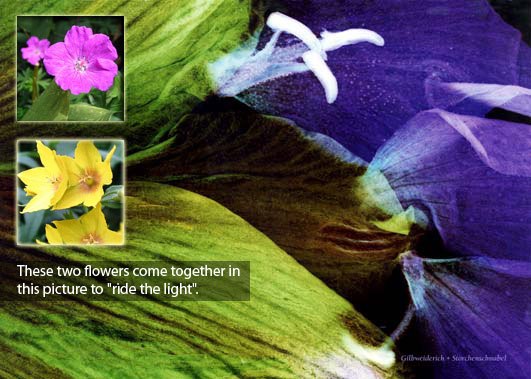
Cranesbill and Loosestrife
These 30 cm X 40 cm originals are
then enlarged into much larger pictures
through a digital scanner.
Thus, in the era of digital photography,
photograms are lavishly produced pictures
in the darkness of the darkroom.
The pictures that Sigrid Klaiber creates
in this way appear as though they were
painted with light. Their colors look
more beautiful and transparent than on
any watercolor. With her pictures of plants
she leads us into a never-before
imagined world of a microcosm full of
beautiful structures, forms, and colors.
The artist gets her colors and shapes from
naturally grown flowers and plants,
which she dissects and reassembles in
new form- and color-arrangements.
Scalpels, tweezers, and needles are the
tools used for these arrangements.
Sigrid Klaiber adds to this medium
the dimension of color and thereby
penetrates deeper into the secrets of
nature.
As flowers are already
beautiful to the naked eye,
Sigrid Klaiber adds an even deeper
dimension, so that the beauty of nature
reveals itself in an even more
impressive and surprising way.
Translation from German: Wolfgang Klaiber
Thank you for Translation!
|
| |

